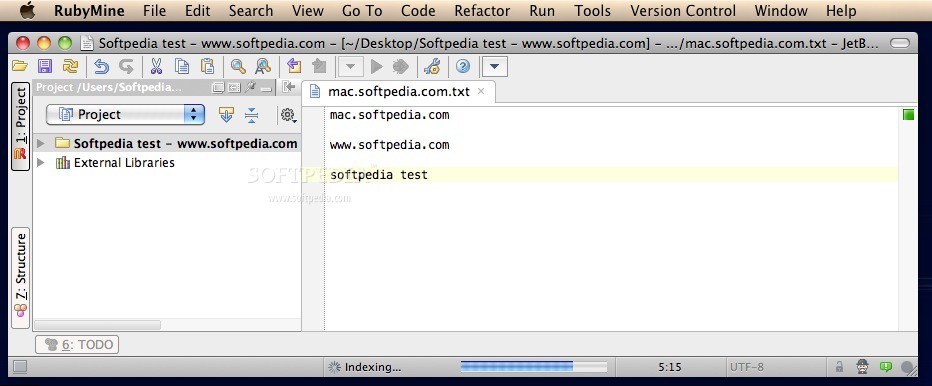

With the team.rb file that I wanted to debug opened, I then opened Run > Edit Configurations.I then clicked the 'green tick' icon to use it for the project, and finally clicked OK I unselected RVM: ruby-2.3.0, and then instead selected RVM: ruby-2.3.1 rubymine_2016_2_4. Opened RubyMine 2016_2_4 and went to File > Default Settings > Languages & Frameworks > Ruby SDK and Gems.Created a Gemset specifically for housing gems to test functionality using RubyMine rvm ruby-2.3.1 do rvm gemset create rubymine_2016_4_2.Checked current version of RVM and upgraded from 1.26.11 to latest version 1.27.0.Showed Ruby gems in RVM 2.3.1 (global) and RVM 2.3.1 (default).Note: I have filtered the list shown below to only display the relevant ones Showed Ruby gems stored globally, in RVM 2.3.0 (global), and in RVM 2.3.0 (default).Instead of responding immediately their feedback gave me a strong clue it must be caused by a gem conflict, so I tried the following approach, which got it to work again!įile > Invalidate Caches & Restart > Invalidate Caches & Restart I got feedback from RubyMine Support suggesting that I show them the output of gem list and to turn on Verbose Output (Settings > Build, Execution, Deployment > Debugger > Verbose debugger). Going to Run > Edit Configurations for current ruby file, and in Configuration tab clicking "Use Other SDK" and choosing RVM: ruby-2.3.0 (I have also tried choosing just RVM: ruby-2.3.0).Going to File > Default Settings > Languages & Frameworks > Ruby SDK and Gems > and selecting to use RVM: ruby-2.3.0.) relevant gems in both the global Ruby location and default RVM This indicated they are in both in /usr/bin/ruby and /Users/Ls/.rvm/rubies/ruby-2.3.0/bin/ruby Checking the location of gems with gem env and which ruby.Checking my RVM version rvm -v rvm 1.26.11.
RUBYMINE DEBUG INSTALL
rvm install 2.1.2 rvm list rvm use 2.1.2)
RUBYMINE DEBUG CODE
Initially when I set a breakpoint in a sample ruby file team.rb and ran Run > Debug it worked (console it displayed 0> instead of Process finished with exit code 0) Users/skline/.rvm/rubies/ruby-1.9.2-p136/bin/ruby -e at_exit $stdout.sync=true $stderr.sync=true load($0=ARGV.shift) -disable-int-handler -evaluation-timeout 10 -rubymine-protocol-extensions -port 54743 -host 0.0.0.0 -dispatcher-port 54744 - /Users/Mp/code/apps/ruby_test/team_system/team.rbįast Debugger (ruby-debug-ide 0.6.0, debase 0.2.1, file filtering is supported) listens on 0.0.0.0:54743 Just set your break point and run a task with debug button (green bug button in Navigation bar.I am trying to run the debugger in Rubymine and I keep getting this error. You are now able to debug all kind of programs like rails application, rake tasks, simple ruby scripts, etc. You can quickly open all the gems you are using and debug them with visual debugger. But from then on, you can run / debug everything from it.
RUBYMINE DEBUG DOWNLOAD
For the first time it will take some time for RubyMine to download all installed gems you have. By default system ruby will be selected, which you might don't want to use. Be sure to select correct Ruby interpreter path. Click on it and select the name of the server configuration that you've created in previous step. You'll now have Fill from deployment server settings button available. I use vagrant, which will share my project files in /vagrant directory.

You need to map your local and server path. Last part of this configuration, which is very important is in Mappings tab. Then just fill the settings and Test SFTP connection. Give it a name (vmbox, vagrant or something) and choose SFTP as type. I know, it's not intuitive to set up a deployment server for getting remote ruby SDK to work. Open menu Tools -> Deployment -> Configuration. If you are a purist and don't want to install any dev tools on your local machine and use VMs for everything, than this is for you as well.Īdding Ruby SDK from RubyMine's Project settings was always causing me some troubles. This post isn't anyhow limited to Windows.
RUBYMINE DEBUG WINDOWS
If you're using JRuby, than you might be just fine sticking with Windows development environment. If you're developing Ruby applications on Windows I'd strongly recommend you to use a virtual machine and install ruby there.


 0 kommentar(er)
0 kommentar(er)
